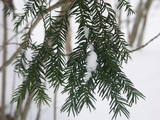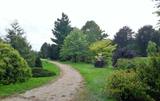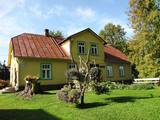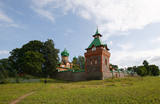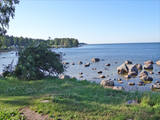| Нo | Название | Описание |
|---|---|---|
|
In der Umgebung von der 52 m hohen Parniddenen Düne sind die im 18. Jh. bei einem Holzeinschlag entstandene Wanderdünen zu sehen! Aussichtsplatz. |
||
|
Хозяйство специализируется на выращивании коз и производстве козьего сыра. Осмотр хозяйства с дегустацией и приобретением продукции. Посетители могут понаблюдать за стадом коз (около 150 коз), приобрести и продегустировать сыры. Серцифицированное биологическое хозяйство и хозяйство здоровой окружающей среды. |
||
|
The forest covered area formed to protect tort protected plant species as yew-tree etc. Territory is not suitable for visitors as visitor without environmental knowledge will see “regular” forest.
|
||
|
Lai nokļūtu līdz šim tornim, ir jāveic apmēram 20 – 30 min ilgs pārgājiens pa dabas taku no Penijē muižas gar Penijegi (Penijõgi) kreiso krastu. Te redzami bebru darbi un to celtās zaru mājas. No torņa paveras skats uz Kazari deltu, kas dabā izpaužas kā monolīts un nepārskatāms niedrājs. To vairākās daļās sadala Kazari un mazāka izmēra upītes. Katrai deltas daļai ir savs vēsturiskais nosaukums: no torņa pa kreisi no Penijegi redzama Lihula meri (Lihulas „jūra”), bet tās labajā pusē - Kloostri meri (Klostri „jūra”). Putnu vērotāji var iziet garāku (7 km) dabas takas loku, kas ved pa palieņu pļavām. Jārēķinās, ka pavasaros būs nepieciešami piemēroti apavi! Pļavas ierobežotās platībās apsaimnieko mājdzīvnieki, tādēļ neaizmirstiet aizvērt vārtiņus aiz sevis un netraucējiet to ikdienas gaitas! No maršruta nav atļauts novirzīties, lai netraucētu putnus. |
||
|
Дубравский дендрарий был заложен в 1958 г. на базе Дубравской лесной научно-исследовательской станции, неподалеку от деревни Вайшвидава, что под Каунасом. Сотрудники дендрария собирают, хранят и экспонируют ценные с научной, познавательной и декоративной точки зрения растения местной и привозной дендрофлоры. Дендрарий занимает около 50 га. В нем растет более 800 видов, подвидов, вариететов (дикорастущих разновидностей) и культиваров (вариантов неизвестных в природе и искусственно выращенных растений) арборифлоры. Некоторые разделы дендрария (коллекция хвойных и вересковых растений, интродукционно-карантинный питомник и экспозиция редких деревьев и кустарников) доступны для посещения только по предварительной договоренности. |
||
|
An important complex of the coastline and its sand dunes along with the mouths of three major rivers – the Lielupe, the Daugava and the Gauja. This area has ancient traditions of recreation and spa services. The territory has lovely shoreline landscapes and features one of the few coastline meadows in Latvia. The nature park includes several restricted areas – the meadows of the Lielupe estuary, Vakarbuļļi, Daugavgrīva, Vecdaugava and Ummis (see the section on “Restricted Natural Areas”). Interesting elements of nature in this area include the amphitheatre of the Garciems dunes, along with individual dunes such as the Legzdiņi dune and the so-called ski mountain dune. Visitors will be attracted by various cultural and historical monuments – fortifications on the Mangaļi peninsula, military buildings from the period of the Russian tsars all the way through the late period of the Soviet occupation, the fortress of Daugavgrīva, the Vecāķi spa with its old shoreline buildings, and the beaches at Daugavgrīva and Vecāķi. The proximity of the city of Rīga and various important recreational resources are the reason for the massive anthropogenic burden that is placed on this territory. The nature park is appropriate for active tourism (hiking, bicycling, boating, driving), distance skiing, nature and bird-watching, cultural tourism, passive leisure and educational tourism. There are nature trails at Daugavgrīva and the Rožu dunes, along with other elements of infrastructure. |
||
|
Данный маяк (построен в 1957 г.) является самым высоким в Латвии – 58 м. Можно осмотреть только снаружи. |
||
|
В экспозиции данной комнаты есть экспонаты, повествующие об истории волостей Лестене и Джуксте, о событиях Второй мировой войны и ее последствиях. Вход за пожертвование. |
||
|
Создана в родном доме «Скудрас» латышского композитора и дирижера Петериса Барисона (1904 – 1947). В экспозиции есть личные вещи композитора, музыкальные инструменты, документы и другие свидетельства. Экскурсии по предварительной записи. |
||
|
Saimniecība "Baltiņi" atrodas Auces novadā un nodarbojas ar lopkopību un lauksaimniecību. Viesiem ir iespēja redzēt un izzināt piena ražošanas procesu, kā arī iepazīt saimniecības dzīvniekus. Saimnieki piedāvā apskatīt padomju laiku auto kolekciju, pieejama arī suvenīru un trauku kolekcija ar govs motīviem. |
||
|
Die zweitgrößte Insel Estlands mit breiter Waldung, Sand- und Steinstränden und einem der ältesten Leuchttürme Europas. |
||
|
Находится на правом берегу реки Сакас – ул. Дзинтару, д. 1. Музей разместился в первом каменном здании Павилосты (из красных кирпичей и валунов) , которое было построено как лоцманский дом в 1879 году. Музейный фонд посвящен истории края и прибрежному рыболовству и мореходству. В качестве экспонатов представлены найденные в Сакской волости каменные и костяные топоры, кованые бронзовые сакты и пояса, а также уникальный экспонат - пресс для медовых сот. Рядом находится дом лодок с крупногабаритными экспонатами. В 2012 году открыта мансарда, где планируется проведение выставок и тематических мероприятий. + 371 63498276. Заслуживает внимания и старейшая часть Павилосты - Акьгалс, которая является типичным образцом застройки прибрежного поселка XIX – XX вв. |
||
|
Находится в Вецлиепае, в старом отреставрированном здании, в котором как будто жил и проводил свои дни почтальон Арвидс. Здание получило приз за интерьер. В меню в привлекательной форме отражена жизнь почтальона Арвида, в которую можно верить или не верить… Латышская кухня: Холодный суп, щавелевый суп, запеченная в печи треска, филе сома и камбалы, приготовленные на гриле свиные ребрышки, букстиньпутра с соусом из сала и лука, картофельные блины, тонкие блинчики, слойка из черного хлеба. Особое блюдо: «Тресочка по-лиепайски» - треска холодного копчения с картофелем, луком и укропом в керамическом горошке. |
||
|
The restricted area was set up to protect Nesaule Hill, which is a forested hillock in the area and features boreal and damp forests.
|
||
|
Куремяэский монастырь основан в 1891-ом году, сегодня это единственный в Эстонии действующий женский православный монастырь. В древние времена в Курумяэ было святое место для эстов, и под горой был жертвенный родник, который сегодня известен как «святой источник» благодаря целебным свойствам своей воды. Монастырь открыт для посетителей, во время прогулки можно познакомиться с жизнью и бытом его обитателей. Для ознакомления со всем комплексом монастыря можно заказать экскурсию у монахинь. |
||
|
Деревянную церковь возвели уже в 1766 году, а новая - каменная – была построена на месте старой и освящена в 1868 году. Благодаря своей высокой башне она служила дневным ориентиром для моряков. В 1993 году была освящена алтарная картина художницы Гунты Лиепини-Гривы «Христос и Петр на море», написанная вместо пропавшей. 18 ноября 1923 года в находящемся поблизости поместье Мазирбского священника (ныне - центр реколлекции) был освящен сине-бело-зеленый флаг ливов. В окрестностях поместья священника можно осмотреть Мазирбские чумные камни, которые являются свидетелями Великой чумы (1710 – 1711 г.). Текст на них на латыни повествовал о том, что прибрежных ливонцев победил Карл IX и чума. Тексты на камнях уже нельзя прочитать, однако они расшифрованы и известны. На кладбище в Мазирбе можно увидеть памятник Старому Тайзелю, памятник родителям капитана А. Бертольда и легендарную могилу оборотня. |
||
|
Beliebte und eine der ältesten Straßen in Jurmala zwischen Dzintari und Majori. Die 1,1 km lange Straße mit Wirtshäusern, Sommercafés und Souvenirladen. |
||
|
In 1804 Käsmu founded the first Estonian naval school and from 1798 – 1920 built more than 40 ships. Now there is a museum about seafaring. |
||
|
Дом шеф-повара находится в бывшем Лигатненском родильном доме «Вильгельма». Он предназначен как место для шеф-поваров, а также других заинтересованных лиц, чтобы делать, творить и экспериментировать. Автор идеи - шеф-повар Эрикс Драйбантс. Цель этого места - побудить вас исследовать и открывать уникальные вкусы и впечатления нашего региона. Дом шеф-повара поддерживает философию медленного питания, а также окружающих фермеров и производителей. Рядом с домом находится сад наблюдателей за природой, где есть детская площадка «Гнездо на дереве», увеличительное стекло для более близкого знакомства с природными элементами и площадка для пикника с камином. В саду есть травяной сад, разбиты фруктовые деревья и ягодные кусты, но в центре его, рядом с Площадью наблюдения за птицами, находится Луг бабочек. |
||
|
В хозяйстве выращивают помидоры, огурцы, клубнику, серый горох, пряности, тыкву и кабачки, а также кур, которые пасутся на природе. Предлагают приобрести произведенную продукцию. |
||


